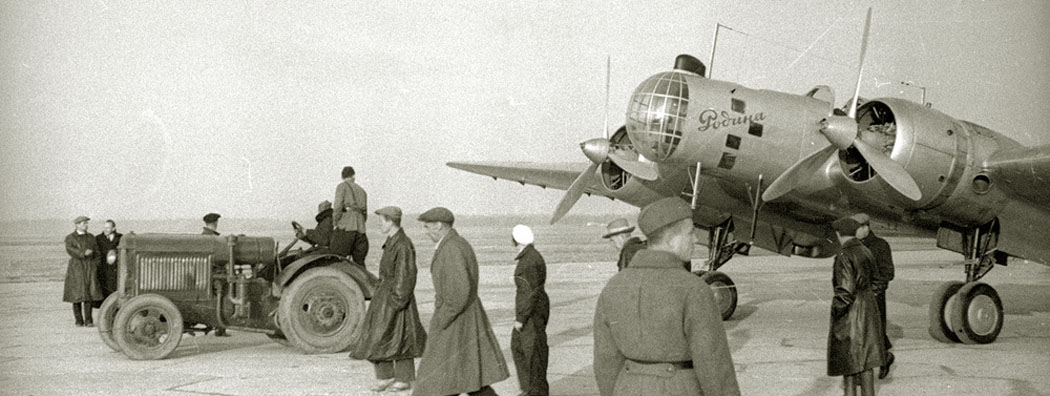|
| Crew |
3 |
| Dimensions |
|---|
| Lenght, m |
15.00 |
| Wing span, м |
31.00 |
| Wing area, m² |
85.00 |
| Weight, kg |
|---|
| Empty |
5800 |
| Loaded weight |
9456 |
| Powerplant |
|---|
| Engine |
2 × PE М-85 |
| Мощность, л.с. |
2 × 800 |
| Performances |
|---|
| Maximum speed, km/h |
over ground |
301 |
| at altitude |
342 |
| Service range, km |
5,000 |
| Service ceiling, m |
7,400 |
| Armament |
|---|
| 3 × 7.62 mm ShKAS machine gun, bombs, kg
|
1050 |
ANT-37bis (DB-2bis). Since the aircraft had a good flight range, on the instructions of the government at plant No. 156 in Moscow, an unfinished copy of the DB-2 was converted into a record aircraft with a flight range of 7000— 8000 km The resulting aircraft was named ANT-37bis or "Motherland". The aircraft was equipped with more powerful M-86 engines with a capacity of 950 hp. with. near the ground and 800 liters. with. at an altitude of 4200 m with three-blade variable pitch propellers. The armament was removed, the volume of the fuel tanks was increased, the nose of the fuselage was re-equipped.
The aircraft had a smooth skin, spars made of metal pipes, the stabilizer was braced with ribbons to the fuselage and keel. The chassis was retracted back into the engine nacelles from the electrical mechanisms, an innovation that did not live up to expectations.
After repairs, the aircraft was operated at Aeroflot, and then until 1943 at the People's Commissariat of the Aviation Industry of the USSR.
On the plane "Rodina" the crew of V.S. Grizodubova, P.D. Osipenko and M.M. Raskovoy made a non-stop flight from Moscow to the Far East on September 24-25, 1938, setting an international female record for flight range (a distance of 6450 km was covered in 26 hours 29 minutes).
 |
Drawing ANT-37 (DB-2)
|
Bibliography

- Long-range bomber DB-2 (ANT-37) / Wings. Mikhail Maslov. /
- Record plane "Rodina" / World Aircraft. Nikolay Gordyukov. /
- The history of aircraft designs in the USSR, 1938-1950. /V.B. Shavrov /
July 07, 2020.
Later, in the analysis of accidents and disasters that occurred with the aircraft ANT-37, ANT-40 and ANT-41, in a special certificate prepared on May 26, 1937 signed by the chief designer of the plant No.156 V.M. Petlyakov, it was said: "The crash with the ANT-37 aircraft occurred due to vibrations of the fuselage along with the vertical tail, and according to the act of the emergency commission, the initial vibration was given by aerodynamic overcompensation of the rudder and servo steering system. was corrected, the fuselage was made stronger and stiffer, full weight compensation of the rudders was carried out, there were no unpleasant incidents with these aircraft ".
Obviously, the landing gear should be retracted and released from the hydraulic system, in addition, the landing gear should be released downstream, making it easier to release and lock when there is no pressure in the system.
---
July 07, 2020.
The ANT-37 was remembered in August 1937 when preparing an operation to search for the crew of S.А. Levanevsky. During the discussion of the likely participants in the search, it was indicated that two such aircraft are in flight condition - one with M-85 engines, the other with M-87 engines. Their maximum flight range was 5000 km with 1 ton of cargo. However, in both of the above cases, the ANT-37 aircraft turned out to be unclaimed.
---
|







